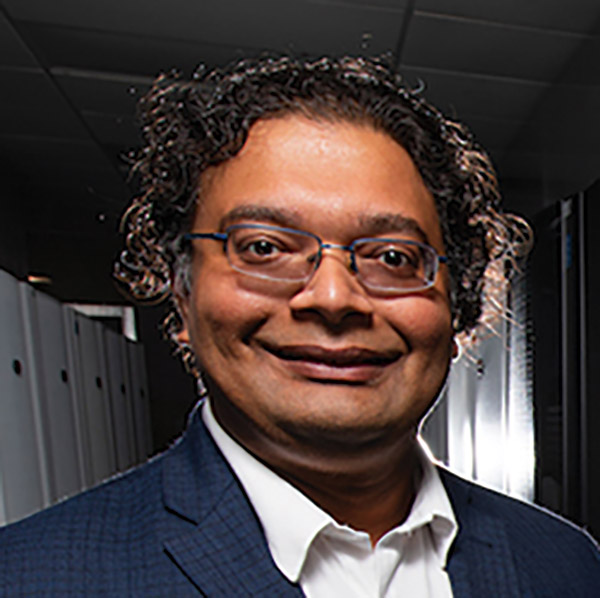NSF AI Research Institute: Using digital twins to multiply crop production
A new $20 million National AI Research Institute led by Iowa State will use the latest artificial intelligence tools to develop digital twins of individual crop plants and entire farm fields. The discoveries will help plant breeders improve crop varieties and farmers boost production.
The Cyclone Engineers behind a new artificial intelligence research institute say their work can accelerate the productivity and sustainability of agriculture at a time when the world’s population is increasing, cropland is decreasing and the climate is changing.
The National Science Foundation and the U.S. Department of Agriculture’s National Institute of Food and Agriculture are supporting the five-year grant to establish an AI Institute for Resilient Agriculture (AIIRA).
Productive partnerships
Baskar Ganapathysubramanian, the Joseph C. and Elizabeth A. Anderlik Professor in Engineering, will lead AIIRA. It will include collaborators from across Iowa State, Carnegie Mellon University, the New York University Tandon School of Engineering, the University of Arizona, the University of Nebraska-Lincoln, George Mason University, the University of Missouri and the Iowa Soybean Association.
The institute also includes collaborators from the tech and agriculture industries, governments, commodity groups and other organizations.
“These are problems that can’t be answered by any individual,” Ganapathysubramanian said. “We need engineers, data scientists, plant scientists, social scientists, farmers, educators and entrepreneurs. AIIRA will bring all this expertise together.”
Deploy the twin
AIIRA researchers will continuously feed real-time data from sensors from plants and fields – including weather data, soil measurements of water and nitrogen, soil and topography maps, ground and drone-based imaging and satellite information – to predictive digital twins.
In addition, the digital twins will be loaded with the latest understanding of plant growth and development.
The digital twin will be a functional, virtual representation of a real system, which can be used to run various what-if scenarios and make decisions in the virtual world. The results can then be applied to decisions in the real world.
Investments that grow
The AIIRA team aims to, like an investment portfolio, find the right mix of plant varieties and management practices to produce the best crop – all virtually.
And with an eye on the future, they say the approach could pay big dividends and make the power of AI available to many students, scientists, business leaders and farmers: More efficient plant breeding for changing environments, optimized planting and fertilization decision-making, research-based policy making, new ag management products, and even increased rural entrepreneurship in the area of AI.
Ultra-precise agriculture, down to the single plant
Rather than tending fields by the hundreds of acres, farmers could one day tend each and every plant with the help of machine learning, robots and other technologies. A five-year, $7 million grant from the National Science Foundation and the U.S. Department of Agriculture’s National Institute of Food and Agriculture will help a team led by Cyclone Engineers develop such a cyber-physical system.
The research team, headed up by Soumik Sarkar, Walter W. Wilson Faculty Fellow in Engineering and an associate professor of mechanical engineering, is applying and integrating layers of technologies – including sensors, machine learning, artificial intelligence, high-throughput phenotyping platforms such as drones and small-scale rolling robots that can also fertilize, weed and cull single plants in a field – with the ultimate goal of replacing farmers’ reliance on heavy machinery and broadcast spraying in operations of all sizes.
Sarkar says the project, called COntext Aware LEarning for Sustainable CybEr-agricultural systems or COALESCE, will go beyond precision agriculture to ultra-precision agriculture, where ag producers can, for instance, localize crop problems early on and make decisions and start controls before troubles spread.
COALESCE project members come from Iowa State, University of Illinois Urbana-Champaign, George Mason University, the Iowa Soybean Association, Ohio State University and University of Arizona.

